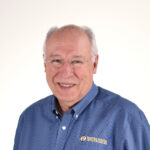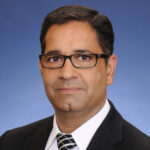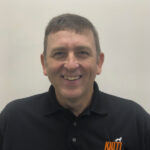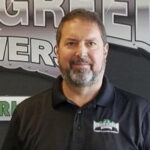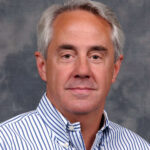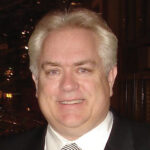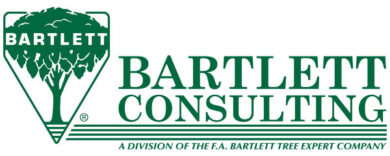2019 Industry Forecasts: Part 1 of 2
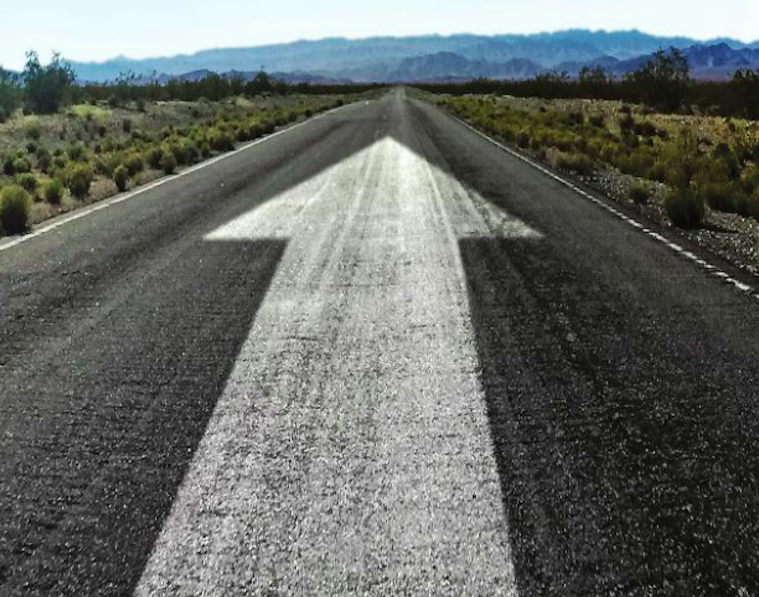
Outdoor Power Equipment (OPE) magazine, sister publication to Landscape Business, recently asked OPE industry leaders to share their insights into the year to come. The following is excerpted from Part 1 of the Industry Forecasts, and responses are presented in the order in which they were received:
PRESIDENT
WALKER MFG.
- What is new with your company/organization?
Walker: Our engineering department has been busy, and we will be expanding our product offering, introducing several brand new designs for Walker Mowers during 2019. In October, we started a new business venture, Walker Distributing Company, a wholly owned subsidiary of Walker Manufacturing Company. The new distributing operation will develop and support dealers in several open and available territories, using the same marketing program as used throughout the USA with the other Walker distributors. Opening the distribution arm of Walker reaffirms our commitment to the single two-step distributor/dealer marketing channel as the best way to deliver excellence in sales and service to our customers.
- What were the OPE industry’s top stories in 2018, and what do you predict will be the top stories of 2019?
Walker: One of the top stories of 2018 was Stanley Black & Decker acquiring a 20 percent share of MTD. We are advocates of private family-owned businesses (as with the Moll family and MTD), and it is concerning to see a big corporate player tie into one of the icons of the OPE industry. Another top story has been the economic expansion of the U.S. and many other world markets while at the same time being concerned over the effect of tariffs and trade wars on pricing OPE products. We are not able to predict the big story for 2019.
- What will be the OPE industry’s hottest trends in 2019?
Walker: We think the answer to this question is the same as 2018 – battery-powered handheld equipment and stand-on mowers are the hot areas of the market with many manufacturers jumping into offering these products.
- What is your overall outlook for the OPE industry in 2019?
Walker: The overall outlook for the OPE industry is positive. We are forecasting modest growth in the upper single digits.
PRODUCT MARKETING DIRECTOR, TURF AND UTILITY VEHICLES
KUBOTA TRACTOR CORP.
- What is new with your company/organization?
Joshi: Kubota continues to be recognized as a global major brand as we expand our products and services to cater to a wider customer base, including landscapers and production agriculture. Kubota is focused on supporting and strengthening its dealers by staying the course in three priorities areas: building a strong pillar of service, introducing and training on new technologies, and sharing dealership best practices for the benefit of all dealers. In addition to these initiatives, Kubota will continue to focus on expanding the breadth of its product lines, including outdoor power equipment. Just last month, Kubota introduced Z700 EFI models and the SZ Series, a stand-on mower, which positioned the company as a full-service turf equipment provider. We’ll continue to innovate and strengthen our position in this market.
- What were the OPE industry’s top stories in 2018, and what do you predict will be the top stories of 2019?
Joshi: The OPE industry continues to evolve and work on value innovations driven by regulations, yet commercially practical for end users. The industry continues to see more and more alternative-powered solutions. Kubota continues to innovate and lead in more power density and fuel efficiency while continuing to compress the size of the machines.
- What will be the OPE industry’s hottest trends in 2019?
Joshi: 2019 will continue to see more and more innovations from OPE manufacturers, especially in the areas of alternative-powered solutions, customer ergonomics and Internet of Things. More and more battery-powered electric hand tools and small mowers will continue to replace gasoline-powered machines. Automowers are getting more and more popular in the U.S., and may expand into the commercial segment as well.
- What is your overall outlook for the OPE industry in 2019?
Joshi: The OPE industry should continue to remain strong with historically lowest unemployment rates and robust consumer economy. As with other industries, the concerns are whether the demand will continue to be strong as inflation and trade tariffs filter through to end consumers. If the housing market continues to stay strong and unemployment low, landscapers should continue to see a strong 2019 and drive the demand for commercial OPE products.
MARKETING MANAGER
TORO
- What is new with your company/organization?
Vogtman: More than anything, we continue to invest a lot of our time and resources into research and development, which contributes to a continuously evolving product offering. 2019 will be no different in the sense that we will continue to introduce new, innovative products to the marketplace. We remain committed to bringing new products to OPE dealers and their customers by listening to our channel partners and end users alike, and developing the best equipment solutions to meet the needs of those out in the field. For example, the drivers behind the development of the GrandStand Multi Force Pro Force blower attachment, which was launched at GIE+EXPO this year, were largely based on feedback from those who work with these machines every day.
We also have new brand messaging for this segment of Toro’s business, which reflects our commitment to helping customers succeed in the field. The new platform – From Start to Finish – holds the promise that those who depend on their equipment to get the job done right can always count on Toro, with durability, trust and productivity continuing to serve as pillars of the Toro brand.
We live the messaging of From Start to Finish here at Toro every day. It’s embedded in our culture and business practices. By emphasizing customer and dealer support during every step of the process, from pre-sale to post-sale service and support, we can continue to reinforce Toro’s core values of trust and reliability.
- What were the OPE industry’s top stories in 2018, and what do you predict will be the top stories of 2019?
Vogtman: There was a lot of important news in the OPE industry in 2018, including developments on lithium-ion battery technology and autonomous mowers, which continue to grab our attention. That said, we believe one of the most important stories covered in 2018 that will also carry over into 2019 is around getting more done with business investments. Some manufacturers, including Toro, understand more than ever before that productivity isn’t just getting more done on properties. Because of this realization, the development process of new product solutions is evolving to have an increasing focus on not just the operator, but also the owner and necessary business support required to drive continued success. As we look toward the future, Toro’s commitment, as it has been for more than 100 years, will be placed squarely on user-friendly product solutions that can drive productivity from start to finish of any task, any day, any season.
- What will be the OPE industry’s hottest trends in 2019?
Vogtman: There are a couple of main themes out there as we look forward to 2019. We believe that there will be a major push for increased versatility in outdoor power equipment. Today, more than ever, business owners have more tools at their fingertips to analyze a sound return on investment analysis.
- What is your overall outlook for the OPE industry in 2019?
Vogtman: There’s a lot of confidence in the U.S. economy right now, which bodes well for OPE dealers across the country, as well as manufacturers. The popularity of zero-turn mowers continues to be on the rise, and there are a lot of first-time homeowners beginning to invest in outdoor power equipment due to the current strength of the housing market. Because of these factors and others, The OPE industry continues to be a strong segment for Toro, and we’re optimistic about the future of the industry.
We owe much of our success in this space to our trusted Toro dealers who – for many customers – are simply an extension of the Toro family. Our dealers do an outstanding job of representing the Toro brand with integrity, and we believe it’s because of this steadfast dedication that it will be another outstanding year.
That said, there are of course factors that we are unable to predict. In our industry, weather is one of those factors – and we have seen some interesting patterns over the past few years. Late starts, unplanned frosts, late-season snowfalls for some northern regions and long, wet springs have all impacted the OPE industry in ways even some climate experts didn’t see coming.
We believe that regardless of weather patterns, there is always a need to be good stewards of the land by maintaining our green spaces, and people will always need the right tools to do that. On the flip side, when the snow flies, we believe we offer the best equipment on the market to handle that as well. As a manufacturer we are in a unique position where regardless of whether the sun is shining or the snow is falling, we have the right equipment to get the job done.
PRESIDENT
THE GRASSHOPPER COMPANY
- What is new with your company/organization?
Guyer: Grasshopper continues to innovate and enhance our line of zero-turn mowers and year-round grounds maintenance systems to meet the needs of our dealers and customers in the field. We have announced several new models in the past year: the much-anticipated 900D 1.3L Diesel, which is the highest-displacement out-front-deck diesel mower in the industry; the all-new 500V Series with a perfect blend of compact out-front performance and economical price, and an excellent introductory point for contractors stepping up to zero-turn mowers from walk-behinds.
Grasshopper dealers can continue to expect timely and efficient parts availability, knowledgeable customer service, and common-sense stocking programs designed to help them earn a high ROI on inventory turnover. Our QuikParts ordering software and QuikQuote configurator/price builder are just two examples of the proprietary resources provided to Grasshopper dealers that make selling and servicing Grasshopper equipment faster, easier and more profitable.
- What were the OPE industry’s top stories in 2018, and what do you predict they will be in 2019?
Guyer: Certainly the 2018 election cycle and results were of importance. In the past, one party’s control of the House of Representatives and the other party’s control of the Senate has generally provided a less volatile regulatory environment. Still, any policies decided at the federal level will affect small businesses – both equipment dealers and their commercial contractor customers alike. Looking ahead to 2019, fuel issues seem to be of particular concern, especially the continued proliferation of E15 gasoline, the use of which can be devastating to small engines such as those featured in outdoor power equipment. Continued discussions of drought and water conservation, emissions compliance, and equipment fuel efficiency will also be of immense importance in the coming year.
- What will be the OPE industry’s hottest trends in 2019?
Guyer: Finding more efficient, sustainable and profitable ways to do business will be a driving theme. Grasshopper continues to lead the industry in productivity and efficiency with more than 10 implements that transform a Grasshopper mower into a complete grounds maintenance system – from vacuum collection to turf aeration to spray applications to snow removal. These implements contribute to a healthy bottom line for the end user, and provide year-round selling opportunities for the dealer stocking Grasshopper equipment. Implements also provide larger package sales and create longer-term customers. And Grasshopper Clean Diesel zero-turn mowers are still the best choice for end users who are serious about curbing fuel usage and reducing fuel and fuel-related overhead costs, and for dealers who want a product that can contribute to healthy sales margins. Grasshopper’s online fuel calculator – available to anyone at grasshopperfuelsavings.com – can help dealers and customers realize just how big of an impact switching to clean diesel can have on the bottom line.
- What is your overall outlook for the OPE industry in 2019?
Guyer: The industry is strengthening with an economy that continues to grow. This is good for both dealers and contractors alike, and as long as the economy continues to grow and consumer confidence improves, the OPE industry is poised for a strong year ahead.
DIRECTOR OF SALES
KPM EXCEPTIONAL LLC &
PRESIDENT 2018-19
OUTDOOR POWER EQUIPMENT AND ENGINE SERVICE ASSOCIATION (OPEESA)
(Editor’s note: Mr. Dollard responded both on behalf of his company, KPM, and on behalf of OPEESA, for which he currently serves as president. As such, his responses are labeled according to his affiliated perspective for each particular response.)
- What is new with your company/organization?
Dollard (KPM): KPM has been fortunate that both of our mowing suppliers, Scag Power Equipment and Wright Manufacturing, have come to market recently with more products that have moved “down line” for us. Both Scag and Wright have their roots in the commercial business, but over the past few years, they have brought to market products for the semi-professional/educated homeowner. It has made a dramatic impact for KPM to be able to branch out into this new and large market. We have always sold commercially rated products to homeowners, but these new products are available in new lower pricing categories. Many of these entry-level professionals or homeowners see what is popular on landscape trailers, and what they see the pros using factors heavily into their buying decision.
Dollard (OPEESA): With OPEESA, we have moved through a period of distribution consolidation and generational business transfer. It is exciting to see many of the manufacturers and distributors move on to a younger set of leaders. New perspectives are generating new ideas, and that initiative is leading us in new technological and service directions. Distribution is – at the end of the day – about service, and our OPEESA members are defining new ways to serve their customers.
- What were the OPE industry’s top stories in 2018, and what do you predict will be the top stories of 2019?
Dollard (KPM & OPEESA): In the time I spent this past year in dealerships and at events, I repeatedly asked the same two questions. One of the top stories for 2018 for me was the feedback I received to these two questions:
- Are your customers (landscapers) charging more for their services this year than they did last year?
- Are your customers (landscapers) experiencing a labor shortage?
The answers I received to these questions were almost universal – “no” to increasing pricing, and “yes” to shortage of labor. If you rely on the landscape professional for a significant part of your business, then I believe you need to pay attention to these trends. These two pressures have initially made many landscape professionals seek equipment that is more productive to overcome the labor shortage, and it may even – in the short term – assist with allowing for more time to increase revenue. These pressures represent a “squeeze” that has had an impact on the commercial customer. What I see some of the best dealers doing is taking a specific interest in the tools, techniques and strategies that help their customers with their businesses, and then becoming an active advocate for them.
I think some of the top stories for 2019 will revolve around landscaper efficiency, dealer consolidation/buyouts and transportation.
Running an OPE dealership requires a specialized set of technical, computer/system, selling and people skills. Many people who enter into owning an OPE dealership from another industry find it hard to service their customers, support and challenge their employees, all while moving the brands that define their business forward. I think that “other dealerships” therefore represent the best chance for a sale of an existing business, and also offer the highest likelihood of a reasonable future return on the business. In 2019, I think you will see more OPE dealerships sell to other OPE dealerships.
Transportation for many reading this article may be a “hidden” issue, but it will find its way into becoming a top story. Whether you look at parcel delivery with the big two – UPS and FedEx – or you look to LTL and truckload shipments, there are capacity issues for different reasons. These reasons are not easily addressed short term and will materialize in price increases, longer delivery times and even shortages of available transportation. Getting our materials to the factories, and then getting the completed products to the dealers place us in the crosshairs of this issue several times. At OPEESA, we have made the education of our members on this topic a priority to help them make current and future decisions.
- What will be the OPE industry’s hottest trends in 2019?
Dollard (KPM & OPEESA): The hottest trend out there will continue to involve the conversion of small-property homeowners to battery-powered equipment. It just makes so much sense for the end user – the performance in terms of power is there, and the balance and weight issues have come a long way. Exchanging a rechargeable battery for a two- or four-stoke combustible engine – with all of its considerations – is a home run for many folks. Many of us have made the OPE industry a lifelong career, and we can lose a little focus on what it is like outside our world. There is an enormous market of customers who own gas engine technology today who will convert to battery in the near future. We are just experiencing the very tip of this conversion.
- What is your overall outlook for the OPE industry in 2019?
Dollard (KPM & OPEESA): I think the outlook for this coming year is really good. I think we have demographic, economic and technological reasons that the industry will grow in 2019. We will always have a stronger correlation to weather, but that’s undecided and beyond our control. I think the best thing for our industry to do is to enter 2019 with a grounded, controlled optimism. With the OPE dealer base specifically, we are a destination for the customer. They might wander into an antique store, but they go into an OPE dealership with purpose. Let’s continue doing a great job of taking care of the customer’s “footsteps” that come through our dealer’s doors in 2019. We are the experts in our industry, and sometimes we don’t give ourselves enough credit – we have a lot to offer customers.
NATIONAL SALES MANAGER
KIOTI TRACTOR
- What is new with your company/organization?
Phillips: 2018 has been a big year for Kioti Tractor, with a lot of exciting announcements. We are expanding our North American headquarters in Wendell, N.C., as well as our presence in Canada. In Wendell, the $13 million expansion will double the size of our existing facilities, and support our goal of providing unmatched product and parts availability to our North American dealer network and customer base. This expansion illustrates our long-term growth strategy of supporting dealers with ready-to-ship inventory, and through strong internal management and business expertise.
Kioti also announced the delivery of our zero-turn-radius mower line in spring of 2019. This line includes 12 models with horsepower ranging from 21- to 27-hp. – six models built for the professional landscape contractor and another six with large-property owners and hobby farmers in mind. We’ve combined our decades of experience and industry expertise to build a zero-turn that is powerful, durable and comfortable for the operator.
Finally, we launched and/or expanded three product lines this year. In March, we introduced our new K9 utility vehicle series with the debut of the K9 2400 model. Joining the Mechron, the K9 comes from the same rugged workhorse bloodline, but offers an enhanced level of performance, operator comfort and new high-value standard features. In May, we expanded our popular CK10SE compact tractor series with four new models – all ready to tackle the toughest tasks efficiently, while providing the operator an enjoyable workstation. In July, we expanded our popular DK10 line with the introduction of eight new compact tractor models in our DK10SE Series – all offering top-of-the-line comfort and performance to tackle most any job.
- What were the OPE industry’s top stories in 2018, and what do you predict will be the top stories of 2019?
Phillips: One of the top stories that is relevant to most everyone is the continued growth of the compact tractor market. Compared to previous years, there was a big jump from 2017 to 2018. A primary reason for that has been because consumer confidence is higher – folks are now more aware of the equipment, know what it can do, and know exactly what function they need it for. Kioti has seen this firsthand with our compact tractor line sales.
Another top trend we saw across the industry was increased interest, and business, in zero-turn-radius mowers. Typically, that segment of the business slows down as we get into the heat of summer, but this year it was steady year round for many. There are two main factors I believe to be the cause: shifts in annual weather patterns – requiring people to buy certain equipment at irregular periods of time – and a strong economy. That lends to an overarching trend, which has popped back up in recent years: when the economy is strong, customers are more inclined to purchase, and in larger quantities for that matter. When times are tight, they look for one piece of equipment that can “do it all” as a means to save. Take for example mid-mount mowers. A few years ago we saw higher sales on mid-mount mowers because they can attach to a tractor and serve as a cheaper alternative to buying a ZTR. Now, we’re seeing an increase in ZTR sales because folks have the flexibility to own both a tractor and a separate, tailored piece of equipment.
As for 2019, a top story we’ll continue to watch is battery-powered equipment. Two years ago at GIE+EXPO there were a fair amount in the market. This year there were not only more battery-powered products, but also new players in the market. From a compact tractor perspective, we’ll continue to find customers pushing for increased comfort, ergonomics and features tackling environmental conditions (stereo connectivity, Bluetooth, USB charging ports, A/C and heat, etc.).
- What will be the OPE industry’s hottest trends in 2019?
Phillips: As previously mentioned, battery-powered equipment will likely be the hottest trend in the OPE industry in 2019. We’ll also continue to see advancements in areas like autonomous mowers, and, of course, battery performance overall will continue to improve.
Along that same vein, we’re probably going to see more technology being added to tractors and mowers. This is a trend taken from the auto industry. High-tech innovations in this segment will likely be slower than what we’ve seen in the automotive industry, but give it three to five years and it’ll certainly be more common. At Kioti we’re working in this space ourselves. In fact, all of our new ZTRs come standard with a digital display console. This physical smart-pad on the mower itself eliminates the need for a physical key, while offering operators feedback on oil life, maintenance needs, tracking and diagnostic information. For folks in the professional landscape and lawn care industry, access to this type of data for business needs is extremely helpful.
- What is your overall outlook for the OPE industry in 2019?
Phillips: There’s nothing but a positive outlook for the OPE industry in 2019, and we can expect it to continue the strong growth we’ve seen over the past few years. People are continuing to move out of the suburbs and are buying land, which means the demand for outdoor power equipment is at a steady incline.
VP OF ENGINEERING, SALES & MARKETING
WRIGHT MFG.
- What is new with your company/organization?
Wright: This Spring, we are launching the Stander B, which is ideal for landscapers getting into the business, and priced 30 to 40 percent lower than most stand-on mowers in the market.
- What were the OPE industry’s top stories in 2018, and what do you predict will be the top stories of 2019?
Wright: I think labor shortages will continue to be something landscape professionals are struggling with, which means that there will be a lot of interest in high-productivity tools, business systems and immigration policy again.
- What will be the OPE industry’s hottest trends in 2019?
Wright: In 2019, I think we will continue to see mergers in the medium and larger landscape companies and, with lower fuel prices and labor shortages, we will continue to see a lot of interest in the powerful and productive equipment.
- What is your overall outlook for the OPE industry in 2019?
Wright: Right now we are in a strong market, and I think 2019 will remain strong. Increasing interest rates will eventually cool off the market – the question is when and how much.
PRESIDENT
MEAN GREEN MOWERS
- What is new with your company/organization?
Conrad: 2018 has been a year filled with change for Mean Green Mowers. In the spring 2018, we decided to go from direct sales to dealer direct with our commercial electric ride-on mowers. Since then, we have gained over 120 dealer locations in the USA, and have expanded sales worldwide with new European distribution covering 12 more countries. More sales means more production, so we expanded our workspace, and added a new dedicated assembly line and fabricating area. To top it all off, we unveiled our new 72-inch EVO ZTR at GIE+EXPO. Interest was overwhelming, and we expect great sales of this all-electric 9-hour-runtime beast when we begin production summer 2019.
- What were the OPE industry’s top stories in 2018, and what do you predict will be the top stories of 2019?
Conrad: The OPE industry is going electric. Conversions from gas handheld equipment to electric handheld equipment grew significantly in 2018, and the conversion to commercial electric ride-on mowers is rapidly rising as well.
- What will be the OPE industry’s hottest trends in 2019?
Conrad: All the sales numbers in the industry point toward more electric handheld and electric ride-on equipment as the hottest trends. The OPE industry is beginning to accept the new electric technology and understand the benefits of zero emissions, low noise, low maintenance, and zero fuel to purchase.
- What is your overall outlook for the OPE industry in 2019?
Conrad: Sales will be even better than 2018, especially in the electric product field. More customers are demanding more services than ever, so the OPE industry will continue with steady growth.
VICE PRESIDENT OF CORPORATE MARKETING
BRIGGS & STRATTON
- What is new with your company/organization?
Carpenter: The Briggs & Stratton commercial brands have been working on new product lines, enhancements and innovations to continue providing our customers – from business owners to homeowners – with reliable solutions that work to increase productivity.
Both the Ferris and Billy Goat brands recently announced expanded product lines. Billy Goat added to its world-class Force walk-behind blower line with the addition of the Hurricane X3 and Z3 zero-turn-radius stand-on blowers, creating the largest line of blowers on the market. While Ferris introduced the all-new Ferris ISX 800, which elevates ride and cut quality with its ForeFront suspension technology.
New capabilities were added to the InfoHub business optimization tool for the commercial turf market. The tool now offers the same tracking and maintenance capabilities for diesel engines that it currently provides for gas-powered equipment, such as lawn mowers. Just like the original platform, InfoHub for diesel engines works on any engine, regardless of brand, as long as it has a battery and an electric fuel pump.
Additionally, Vanguard expanded its OilGuard system in the marketplace based on the success and demand for the innovation. Launched in 2017 on the Ferris mower line, OilGuard was developed to reduce downtime associated with engine oil maintenance by increasing oil maintenance intervals to 500 hours. It also makes oil changes cleaner, faster and easier with an easy fill cap and integrated oil filter. OilGuard is just one example of the types of innovations Vanguard is developing with an eye toward increasing productivity through high-performance, increased fuel savings and reduced maintenance needs.
- What were the OPE industry’s top stories in 2018, and what do you predict will be the top stories of 2019?
Carpenter: In 2018, we saw three major stories coming out of the OPE industry, including the proliferation of stand-on mowers, more EFI innovations than ever before, and the beginning acceptance of the benefits of the Internet of Things (IoT) among early adopters who place a premium on productivity. As the industry continues to advance, these stories align with an increasing emphasis on productivity coupled with digitalization.
We’re seeing improved designs and broader price points when it comes to stand-on mowers, which is leading to a widening acceptance and even preference of the model with landscapers. EFI innovations continue to proliferate, as the fuel savings benefits and reliable choke-less starting make the technology a need-to-have in the industry.
Finally, IoT is increasingly connecting users with valuable data from their equipment, enabling operational efficiencies and improving productivity. As we see more and more equipment become IoT enabled, the industry benefits from the value of increased connectivity and data-driven solutions.
Briggs & Stratton brands are focused on these trends for 2019, and are making major investments in better understanding end-user needs and the subsequent innovations the industry is demanding.
- What will be the OPE industry’s hottest trends in 2019?
Carpenter: At Briggs & Stratton, we’re predicting three major trends for 2019: technology tracking for increased productivity, expanded services to extend revenue for landscapers, and increased outsourcing of services by homeowners.
As technology continues to improve our daily lives, its impact on optimizing services in the OPE industry is becoming equally significant. The ability to track equipment through services, such as InfoHub, allows landscape businesses to better deploy and maintain their equipment fleets. This provides business owners with valuable data on equipment performance, crew efficiency and jobsite profitability. That data can then be leveraged to improve productivity through capitalizing on fuel-saving opportunities and anticipating maintenance needs. We expect to see an increased reliance on these types of value-added services in 2019.
Lastly, we’re anticipating an increase in landscape service outsourcing by homeowners in the coming years. The value landscaping adds to properties, such as increased curb appeal for prospective buyers, coupled with the increasingly comprehensive services offered by landscaping companies sets the stage for more outsourcing in 2019. Increased services, such as aeration, fertilizing, pest and weed control and overseeding, make it more appealing for homeowners to work directly with professionals rather than go the DIY route. Plus, as these services become widely recognized as value adds to a home, the investment proves well worth it in the end.
- What is your overall outlook for the OPE industry in 2019?
Carpenter: Briggs & Stratton has a positive outlook for the future of the OPE industry in 2019. We believe we’re poised to capitalize on the growing landscape business through expanded product lines and enhanced innovations that provide the productivity solutions landscapers and homeowners are looking for in 2019 and beyond. Additionally, we’re working to further develop our parts support for dealers, ensuring all our brands that work within the OPE industry are providing superior service and reliable parts support.
PRODUCT STRATEGY MANAGER
KAWASAKI MOTORS CORP.
- What is new with your company/organization?
Dykstra: Kawasaki Engine Division’s growth each year always feels new and exciting. We have again seen growth in all facets from manufacturing, R+D, sales and service-support. Examples on what’s new: Our field service advisors doubled their number of visits to our dealers for service and support in 2018 and set another attendance record at our Factory Hands-On Schools and Dealer Update Schools. In Order Services, our website updates further reduced call wait times and further improved our dealers’ online experience. More new products are also rolling out here at Kawasaki, like our new line of stainless-steel replacement mufflers for most of our FX, FT, FS, FR carb and EFI engines; and a new heavy-duty tool-less flexible oil drain hose for all our air-cooled V-twin engines, including our venerated FH series. Also, our exciting lineup of EFI/eGov engines expanded their presence in the field with landscapers enjoying increased productivity, easier starting, decreased fuel costs and lower emissions. R+D grew again – knocking out walls and adding staff. And finally, our manufacturing plant increased productivity once again.
- What were the OPE industry’s top stories in 2018, and what do you predict will be the top stories of 2019?
Dykstra: Tariffs. A lot of uncertainty remains as to how exactly this plays out; I am cautiously optimistic. Thankfully, Kawasaki Engine Division manufactures all of its four-stroke V-twin engines, air-cooled and liquid-cooled, here in the USA; so we believe tariffs will have less of an impact on us compared to those importing engines and whole-goods from overseas. Another top story in the engine world is European Parliament’s adoption on January 1, 2018 of Stage V diesel emissions. These new regulations will further drive the price of diesel engines up, forcing OPE manufacturers to consider alternatives. The top alternative is gasoline engines, not battery, despite the hype you may read. The fact is battery energy density is still a very small fraction versus gasoline energy density, making gasoline engines the natural next choice for diesel applications. Outside of the engine universe, another top story unfolding in OPE is the steady growth of internet sales. Even though Amazon has the fastest OPE growth rate, Home Depot and Lowe’s still dominate OPE sales volumes online. It is worth noting, however, that the online growth rate of family-owned L+G dealerships is matching the overall growth rate of online OPE sales. This tells me local dealerships are successfully competing and keeping up in the ever-growing world of e-commerce, which is fantastic to see. As for my final top story, I would like to touch on battery in the next question, below.
- What will be the OPE industry’s hottest trends in 2019?
Dykstra: Battery-powered 21-inch push mowers and handheld products are growing robustly in both product offerings and sales. However, battery-powered ride-on mowers for homeowners are still just making their debut. As for the commercial side of things, the vast majority of customers still demand engines on commercial turf applications from push mowers to ride-on mowers and everything else. This same preference is also playing out in the automotive world, where trucks for homeowners and all commercial vehicles still demand engines. I believe the commercial sector will remain a strong engine market for many years to come. Also, on the topic of commercial mowers, the buzz continues to grow on stand-ons; could 2019 be the year they become a hot trend? They seemed poised to give ZTRs a run for their money. And finally, the Internet-of-Things (IoT) revolution is knocking at the door of OPE. Kawasaki foresaw this up-and-coming technology and integrated the automotive standard, CAN bus communication, into our FX and FT EFI/eGov engine designs from the very start. Just like smart phones, we now offer smart engines with plug-n-play capability for IoT platforms such as fleet telematics to increase landscaper productivity like it did in ag. And also, it sets us up nicely for future hot trends in smart mowers – the first one there wins – and our EFI/eGov engines are ready for you.
- What is your overall outlook for the OPE industry in 2019?
Dykstra: Consumer confidence remains very high, disposable income at record highs and new housing starts continues to track upward. Also, Kawasaki’s engine manufacturing plant in Maryville, Missouri, is running full steam ahead, which tells me OPE manufacturers are confident in next season’s outlook. Therefore, despite tariffs taking full effect in the beginning of 2019, I believe L+G dealerships in both commercial and residential markets will do well in brick-and-mortar sales and online sales, just at a slower pace than last year. And, finally, Gen Y (Millennials) are leaving their virtual worlds as they fall in love, marry, have kids, purchase their first home and discover this breathtakingly beautiful creation – the real world – that beckons them to explore it, work it and care for it. And that is where we all come in!
PRESIDENT
STIHL INC.
- What is new with your company/organization?
Fischer: After launching a record number of new products over the last two years, Stihl Inc. is looking forward to introducing even more innovation in 2019. We have a wide range of new products forthcoming next year for both homeowners and professionals to include the continued expansion of our battery range, groundbreaking enhancements to our gas range, and the introduction of the next generation of our robotic mowers.
Exciting new products include:
- Stihl battery: FSA 130 R string trimmer; KMA 130 R KombiSystem multi-task tool; HSA 94 R, HSA 94 T hedge trimmers; MSA 161 T top-handle chain saw; RMA 460 V and RMA 510 V self-propelled lawn mowers
- Stihl gasoline-powered products: BR 800 C-E, BR 800 X Magnum backpack blowers; MS 462 C-M / MS 462 R C-M chain saws
- Stihl electric products: Stihl iMow RMI 422 LTE / RMI 632 LTE; RE 90 pressure washer
Stihl is also investing heavily in all areas of the company including R&D, inventory, manufacturing and expansion of our facilities across the country, to ensure quality products are delivered on time to our dealers and their customers. Investments include expansion of several of our branches, upgrades to our manufacturing and administrative facilities and addition of new battery assembly lines.
- What were the OPE industry’s top stories in 2018, and what do you predict they will be in 2019?
Fischer:
- Next generation of customers. As we’ve seen for the past few years, the buying habits of the OPE customers are evolving, and, as an industry, we must evolve too. Just as we embrace the advancements in our product technology, we must also embrace new ways of thinking when it comes to our retail and marketing strategies. In 2019, I predict that the dealers who continue to be progressive and who embrace change, instead of fighting it, will have the most long-term success.
- Buying local. The continued presence of online retail giants, particularly Amazon.com, is another reoccurring storyline. Couple that with news of store closings and bankruptcy announcements from big box retail giants, and some might say brick and mortar stores are on the decline. Yet, despite these headlines, we are still seeing a resurgence of buying local, and OPE dealers taking back market share. Stihl dealers are thriving. That’s why Stihl will continue to focus on growing our network of local dealers who provide the quality service that we believe sets them apart from the big box stores and online retailers.
- What will be the OPE industry’s hottest trends in 2019?
Fischer: Battery products continue to be the biggest trend in our industry for the foreseeable future. We already see that battery products are being readily adopted by homeowners young and old; and, as the technology gets better and more powerful, the pros are starting to add battery products to their fleets as well.
While the initial investment in pro battery products is still slightly higher than gas, when you factor in maintenance and service costs for a gas unit vs. battery the total cost of ownership of battery makes the battery product a viable and attractive addition to a landscaper’s fleet. Add to that an increased desire for environmentally “green” options on the part of customers, and the fact that some city and state regulations for emissions and noise regulations are increasing, and we believe that the adoption rates for battery could increase much faster than many anticipate.
Robotic mowers, like Stihl iMow, will also be products to watch in 2019. While already very popular in Europe, we are just starting to see interest in these products in the U.S. with both homeowners and professionals. Busy homeowners are, of course, interested in them for their convenience, but we will see more and more professional landscapers looking at these products as part of their business model with real profit potential. In a time when finding skilled labor is tough, these mowers could supplement their workforce, allowing their teams to focus on trimming, blowing and other tasks.
Dealers should be ready to meet these increased demands for new technology by familiarizing themselves with the new products and stocking a range of equipment – battery- and gasoline-powered – that respond to their customers’ needs
- What is your overall outlook for the OPE industry in 2019?
Fischer: After a weather-challenged 2018, we are very optimistic about the growth of the industry in 2019. New products and technology sells. With so many exciting new products launching next year from all the manufacturers, dealers should be excited about their prospects for attracting new customers and repeat business.
DIRECTOR OF SALES AND MARKETING
CENTRAL POWER DISTRIBUTORS, INC.
- What is new with your company/organization?
Hedges: Figuring out how to navigate through the challenges of hiring, tariffs, price increases, industry changes, declining margins, reduction of quality dealers and similar topics is what we are doing. Besides those exciting topics, not much else is new.
- What were the OPE industry’s top stories in 2018, and what do you predict will be the top stories of 2019?
Hedges: The proposed purchase of 20 percent of MTD by Stanley Back & Decker was a big announcement in 2018. With MTD being family owned forever, this is a huge industry announcement. The announcement of tariffs and how it will affect our industry was also big, and will remain big until it is the new normal, or until it ends. Prop 65 has made manufacturers and e-tailers ask if California is worth selling into. Having to add stickers and warning messages to just about everything is the main reason, not to mention potential non-compliance lawsuits. (Once again, we are reminded why not everyone lives in California.) And Sears finally filing Chapter 11 was also big news. I hope 2019 will settle down a little.
I predict lithium will continue to take market share from handheld products. We should see more commercial lithium products develop, and eliminate the need for a charging solution. Batteries will be developed that last all day under the toughest conditions.
Politics will play an important role with a fight over taxes, tariffs and fake news. How the branches of government get along will go a long way to determine whether the economy stays strong or goes back into hibernation.
And finally, I think selling online will have some challenges too. More companies will – or should – have MAP pricing. It would help get some control, but policing it will be hard. What impact will Amazon have on our industry, and will they create a service solution as they continue their quest for world domination?
- What will be the OPE industry’s hottest trends in 2019?
Hedges: This is always a tough question since nothing stays the same very long. It used to take 4 to 5 years for something in the industry to change. Today it is 4 to 5 days.
Lithium will continue to make news. Distributor consolidation could happen in 2019 as older owners with no real succession plan might sell their business to another distributor. Not having enough techs will continue to get worse, and companies will need to figure how to address that issue. Manufacturers will continue to find new ways to train dealers using more technology. And, if history repeats itself, California will come out with a new policy that hurts our industry.
- What is your overall outlook for the OPE industry in 2019?
Hedges: Weather usually dictates the year, but in 2019 there are other things that will drive whether it is a good year or a bad one. As of writing this, tariffs against China appear to be going forward. If this is the case, parts sales should thrive in 2019, and equipment manufacturers will see a decline in new sales. Commodity costs will rise as long as the economy grows, and this will hurt too. U.S. manufacturers might have to evaluate their products being built in China. If the tariffs stay around for a while, India may be a choice to manufacture items. With the new USMCA (formerly NAFTA) maybe manufacturing in Mexico will be an option if the company believes American made is still too high.
DIRECTOR OF MARKETING
EXMARK
- What is new with your company/organization?
Briggs: As we continue to focus on our commercial heritage, we introduced our new Staris stand-on riding mower this past October at GIE+EXPO. Overall, it was incredibly well received. Staris models give landscape maintenance professionals a more versatile, productive, easy-to-use and durable mower that enables each worker to get more work done every day.
The recent acquisition of L.T. Rich by Exmark’s parent company, The Toro Company, while still in the early stages, will help Exmark expand its offering of turf management equipment.
With the recently announced retirement of our leader, Judy Altmaier, Exmark will have a new leader as we move into 2019. On November 1, 2018, Daryn Walters moved into the general manager role at Exmark. Daryn has been with Exmark since 2006, and was the director of marketing prior to assuming his new role with the company.
2) What were the OPE industry’s top stories in 2018, and what do you predict will be the top stories of 2019?
Briggs: As a manufacturer, tariffs and related commodity price increases will be a growing factor as we move into 2019. Overall, the cost of raw materials has been on the rise, and this is a trend we don’t see ending in the next year.
There were a number of mergers or acquisitions among OPE manufacturers in 2018. Obviously, the big one for us is L.T. Rich, but there were a number of other notable mergers and/or acquisitions over the course of the year.
Labor shortages were a big theme of 2018, and unfortunately that’s a trend that will very likely continue into 2019. As a result, our customers are looking for more productive, efficient equipment, to enable workers to work more quickly, and get more done each day without sacrificing quality.
3) What will be the OPE industry’s hottest trends in 2019?
Briggs: Efficiency is a big, over-arching theme that touches nearly every facet of our industry. As the price of gasoline continues to rise, our customers are increasingly looking at alternative fuels (diesel or propane), battery-powered electric equipment, or technologies to reduce fuel consumption, such as Electronic Fuel Injection (EFI) and Exmark’s patented RED Technology.
Unfortunately, the tariff-related commodity price increases I mentioned earlier will lead to price increases for most, if not all, outdoor power equipment in 2019.
4) What is your overall outlook for the OPE industry in 2019?
Briggs: We believe the industry is healthy overall, and there is a strong demand for products that are more efficient to own and operate. As a result, we feel good about predicting moderate market growth in 2019. Of course, weather or another unanticipated event could affect this, but knowing what we know today, things look good in the year to come.
The full Industry Forecasts article, including advice for OPE dealers, can be found in the January issue of OPE magazine and at OutdoorPowerEquipment.com.

